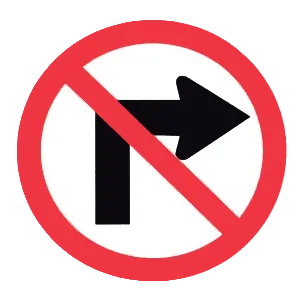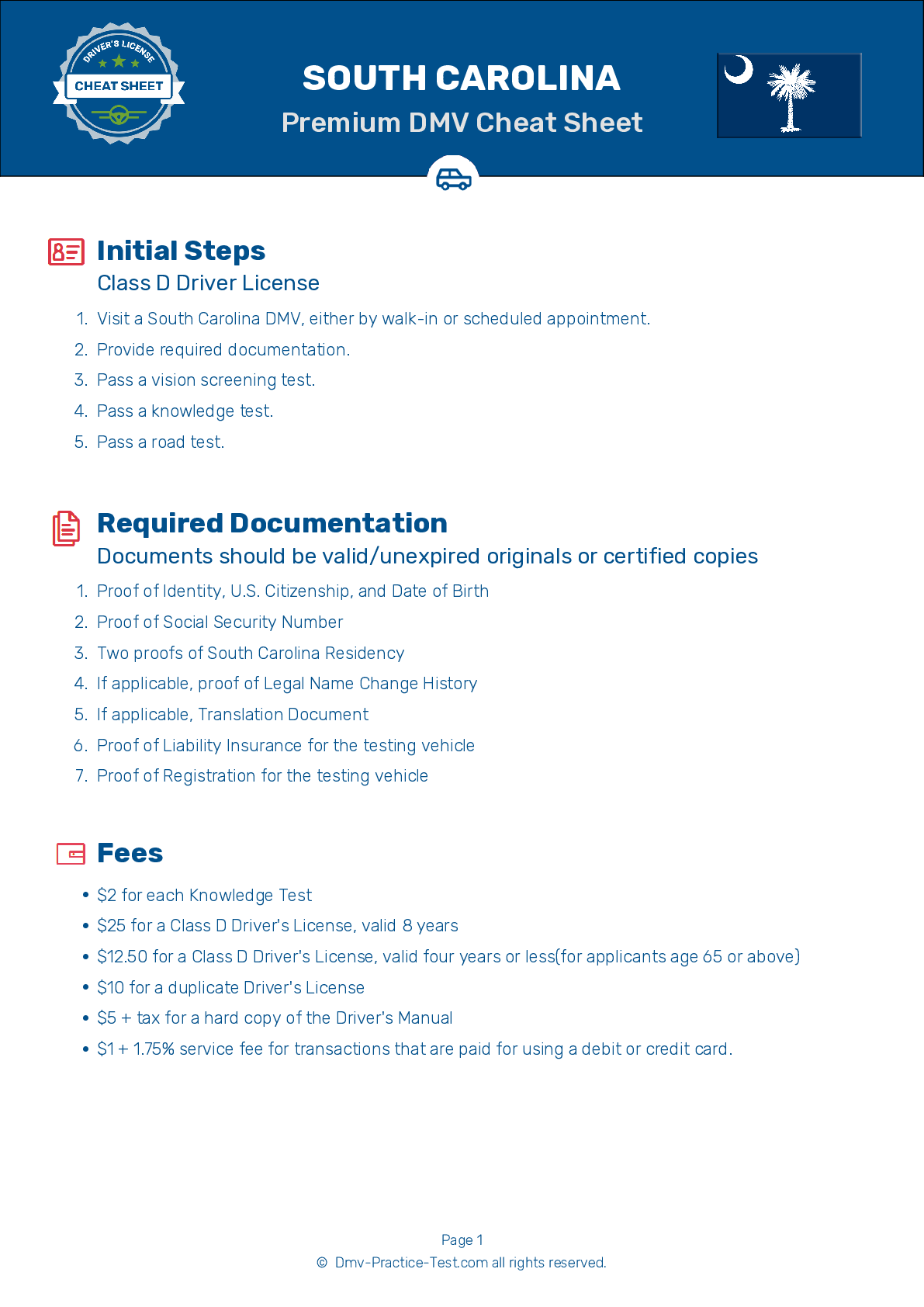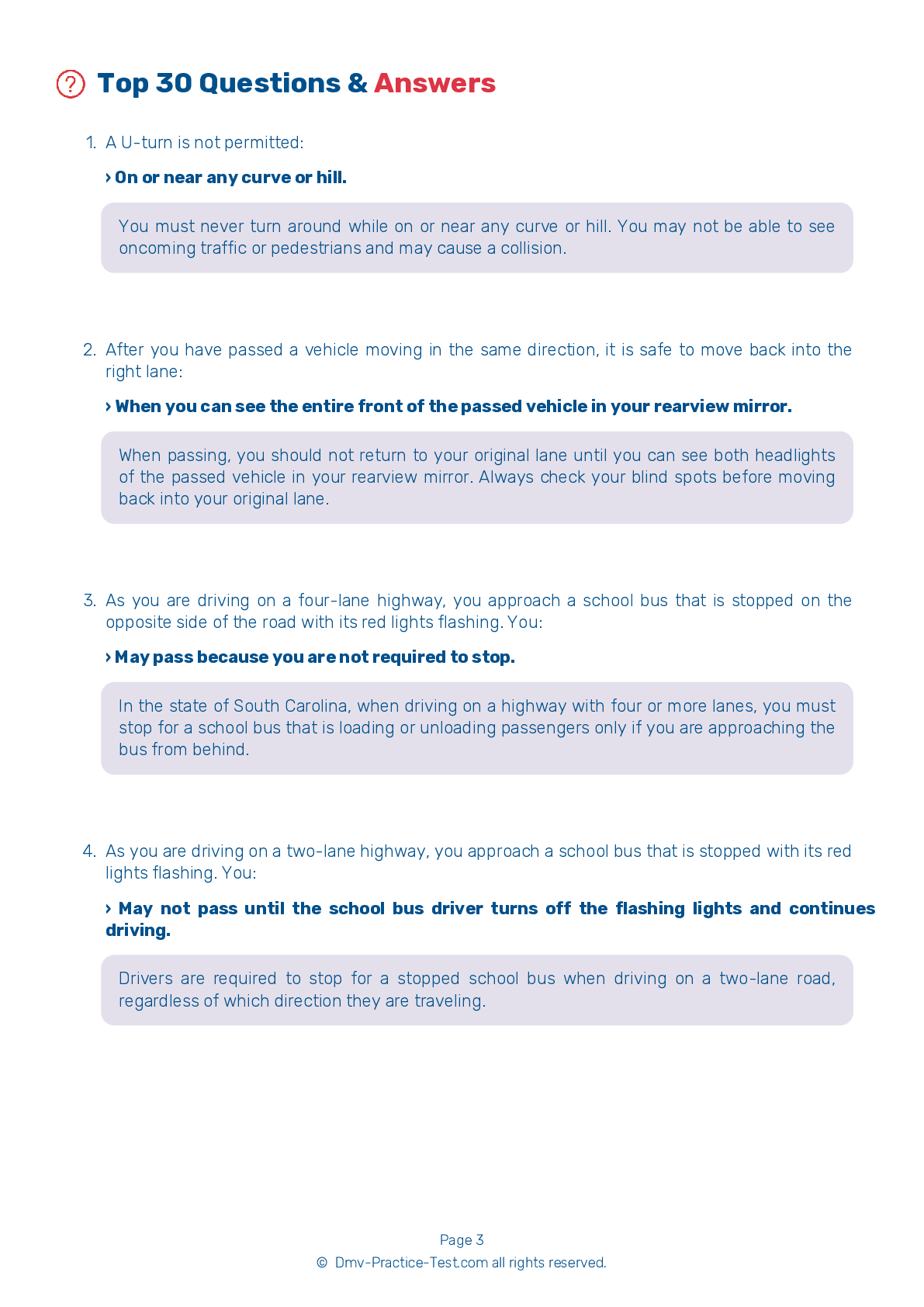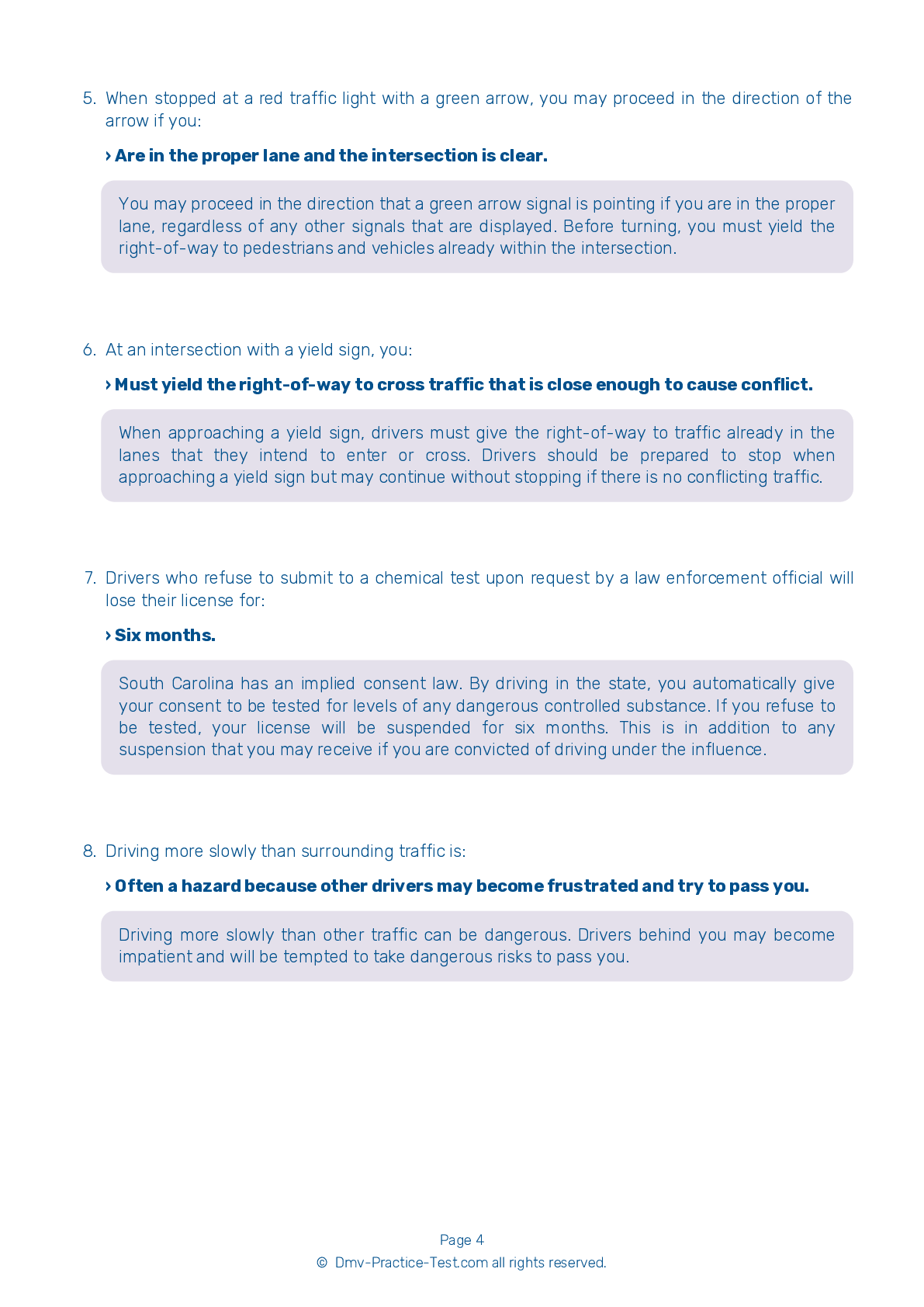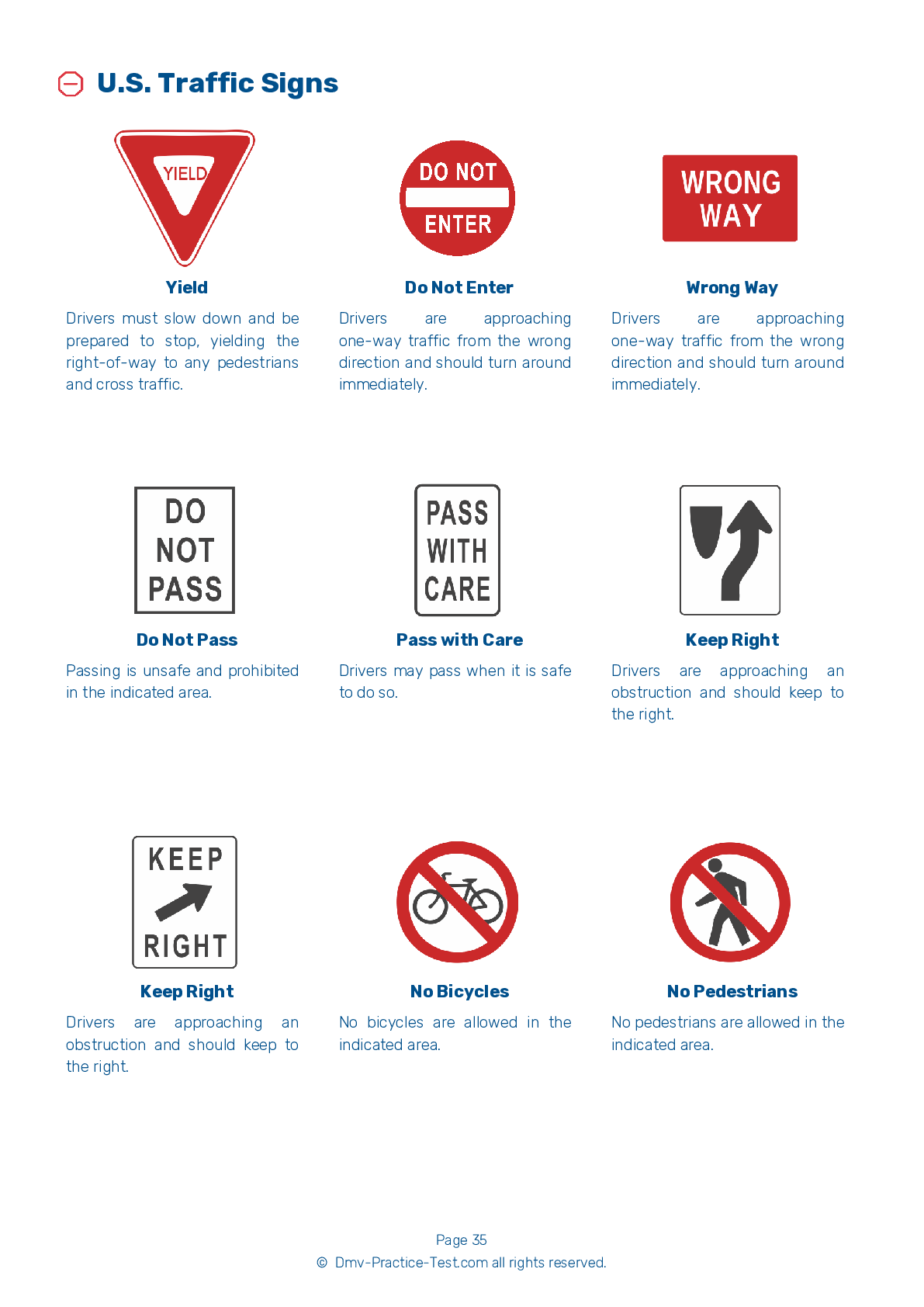FREE South Carolina DMV Practice Test #17 Page 3 of 4
The DMV practise exams in South Carolina have been updated for January 2025. It includes questions based on the most important traffic signals and laws for 2025 from the South Carolina Driver Handbook. To study for the DMV driving permit test and driver's licence exam, use actual questions that are very similar (often identical!) to the DMV driving permit test and driver's licence exam.
Each question on the practise exam has a tip and explanation to help you recall the ideas. Questions about traffic rules, traffic signs, and driving statutes, as well as knowledge from the Driver Handbook, will be included in the written portion of the official South Carolina DMV test.
You must properly answer 24 of the 30 questions to receive a passing mark. Use the South Carolina Department of Motor Vehicles' practise exam to help you prepare for your instruction permit or driver's licence.
The DMV exam is offered in a variety of languages.
Using any form of testing help will result in an automatic fail, and the DMV may take further action against your driver's licence, so avoid it.
17 . This road sign means:
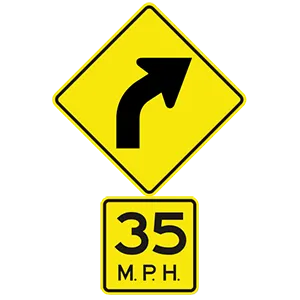
These signs indicate that the road curves to the right ahead and that drivers should slow down to the safe speed indicated (in this case, 35 mph).
18 . It is important to slow down:
You should always slow down when driving on narrow or winding roads, near intersections, near railroad crossings, on hills, in sharp or blind curves, where there are pedestrians or driving hazards, and when the roads are wet or slippery.
19 . Which of the following should you do after an accident?
If you are involved in an accident, you must stop your vehicle and move it from the roadway to the shoulder, provide aid to anyone who has been injured, protect the accident scene as much as possible, notify law enforcement as soon as possible, exchange information with other drivers involved, and submit any required forms to the DMV and your insurance company.
20 . You should be cautious when passing a bicycle because:
You should always be cautious when passing a bicycle because the cyclist may have to swerve into traffic to avoid an object on the road. Always be particularly careful when driving near bicyclists.
21 . This sign means:
